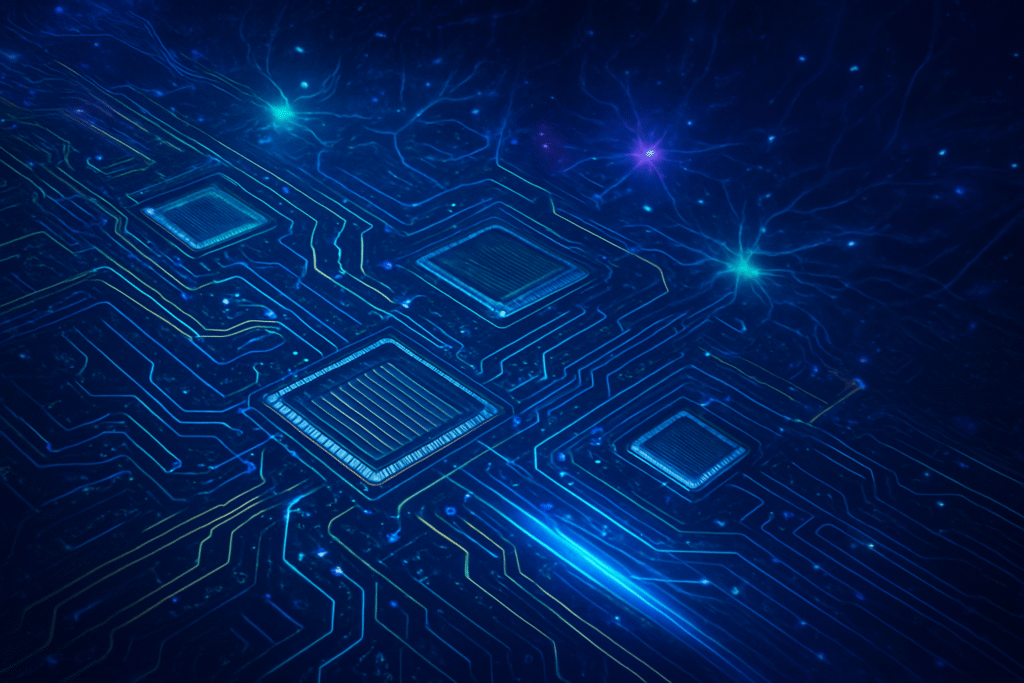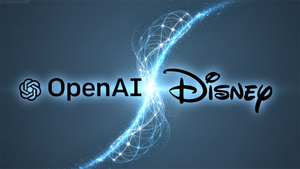
The semiconductor industry stands at the precipice of a profound transformation, with the memory chip market undergoing an unprecedented evolution. Driven by the insatiable demands of artificial intelligence (AI), 5G technology, the Internet of Things (IoT), and burgeoning data centers, memory chips are no longer mere components but the critical enablers dictating the pace and potential of modern computing. New innovations and shifting market dynamics are not just influencing the development of advanced memory solutions but are fundamentally redefining the "memory wall" that has long constrained processor performance, making this segment indispensable for the digital future.
The global memory chip market, valued at an estimated $240.77 billion in 2024, is projected to surge to an astounding $791.82 billion by 2033, exhibiting a compound annual growth rate (CAGR) of 13.44%. This "AI supercycle" is propelling an era where memory bandwidth, capacity, and efficiency are paramount, leading to a scramble for advanced solutions like High Bandwidth Memory (HBM). This intense demand has not only caused significant price increases but has also triggered a strategic re-evaluation of memory's role, elevating memory manufacturers to pivotal positions in the global tech supply chain.
Unpacking the Technical Marvels: HBM, CXL, and Beyond
The quest to overcome the "memory wall" has given rise to a suite of groundbreaking memory technologies, each addressing specific performance bottlenecks and opening new architectural possibilities. These innovations are radically different from their predecessors, offering unprecedented levels of bandwidth, capacity, and energy efficiency.
High Bandwidth Memory (HBM) is arguably the most impactful of these advancements for AI. Unlike conventional DDR memory, which uses a 2D layout and narrow buses, HBM employs a 3D-stacked architecture, vertically integrating multiple DRAM dies (up to 12 or more) connected by Through-Silicon Vias (TSVs). This creates an ultra-wide (1024-bit) memory bus, delivering 5-10 times the bandwidth of traditional DDR4/DDR5 while operating at lower voltages and occupying a smaller footprint. The latest standard, HBM3, boasts data rates of 6.4 Gbps per pin, achieving up to 819 GB/s of bandwidth per stack, with HBM3E pushing towards 1.2 TB/s. HBM4, expected by 2026-2027, aims for 2 TB/s per stack. The AI research community and industry experts universally hail HBM as a "game-changer," essential for training and inference of large neural networks and large language models (LLMs) by keeping compute units consistently fed with data. However, its complex manufacturing contributes significantly to the cost of high-end AI accelerators, leading to supply scarcity.
Compute Express Link (CXL) is another transformative technology, an open-standard, cache-coherent interconnect built on PCIe 5.0. CXL enables high-speed, low-latency communication between host processors and accelerators or memory expanders. Its key innovation is maintaining memory coherency across the CPU and attached devices, a capability lacking in traditional PCIe. This allows for memory pooling and disaggregation, where memory can be dynamically allocated to different devices, eliminating "stranded" memory capacity and enhancing utilization. CXL directly addresses the memory bottleneck by creating a unified, coherent memory space, simplifying programming, and breaking the dependency on limited onboard HBM. Experts view CXL as a "critical enabler" for AI and HPC workloads, revolutionizing data center architectures by optimizing resources and accelerating data movement for LLMs.
Beyond these, non-volatile memories (NVMs) like Magnetoresistive Random-Access Memory (MRAM) and Resistive Random-Access Memory (ReRAM) are gaining traction. MRAM stores data using magnetic states, offering the speed of DRAM and SRAM with the non-volatility of flash. Spin-Transfer Torque MRAM (STT-MRAM) is highly scalable and energy-efficient, making it suitable for data centers, industrial IoT, and embedded systems. ReRAM, based on resistive switching in dielectric materials, offers ultra-low power consumption, high density, and multi-level cell operation. Critically, ReRAM's analog behavior makes it a natural fit for neuromorphic computing, enabling in-memory computing (IMC) where computation occurs directly within the memory array, drastically reducing data movement and power for AI inference at the edge. Finally, 3D NAND continues its evolution, stacking memory cells vertically to overcome planar density limits. Modern 3D NAND devices surpass 200 layers, with Quad-Level Cell (QLC) NAND offering the highest density at the lowest cost per bit, becoming essential for storing massive AI datasets in cloud and edge computing.
The AI Gold Rush: Market Dynamics and Competitive Shifts
The advent of these advanced memory chips is fundamentally reshaping competitive landscapes across the tech industry, creating clear winners and challenging existing business models. Memory is no longer a commodity; it's a strategic differentiator.
Memory manufacturers like SK Hynix (KRX:000660), Samsung Electronics (KRX:005930), and Micron Technology (NASDAQ: MU) are the immediate beneficiaries, experiencing an unprecedented boom. Their HBM capacity is reportedly sold out through 2025 and into 2026, granting them significant leverage in dictating product development and pricing. SK Hynix, in particular, has emerged as a leader in HBM3 and HBM3E, supplying industry giants like NVIDIA (NASDAQ: NVDA). This shift transforms them from commodity suppliers into critical strategic partners in the AI hardware supply chain.
AI accelerator designers such as NVIDIA (NASDAQ: NVDA), Advanced Micro Devices (NASDAQ: AMD), and Intel (NASDAQ: INTC) are deeply reliant on HBM for their high-performance AI chips. The capabilities of their GPUs and accelerators are directly tied to their ability to integrate cutting-edge HBM, enabling them to process massive datasets at unparalleled speeds. Hyperscale cloud providers like Alphabet (NASDAQ: GOOGL) (Google), Amazon Web Services (AWS), and Microsoft (NASDAQ: MSFT) are also massive consumers and innovators, strategically investing in custom AI silicon (e.g., Google's TPUs, Microsoft's Maia 100) that tightly integrate HBM to optimize performance, control costs, and reduce reliance on external GPU providers. This vertical integration strategy provides a significant competitive edge in the AI-as-a-service market.
The competitive implications are profound. HBM has become a strategic bottleneck, with the oligopoly of three major manufacturers wielding significant influence. This compels AI companies to make substantial investments and pre-payments to secure supply. CXL, while still nascent, promises to revolutionize memory utilization through pooling, potentially lowering the total cost of ownership (TCO) for hyperscalers and cloud providers by improving resource utilization and reducing "stranded" memory. However, its widespread adoption still seeks a "killer app." The disruption extends to existing products, with HBM displacing traditional GDDR in high-end AI, and NVMs replacing NOR Flash in embedded systems. The immense demand for HBM is also shifting production capacity away from conventional memory for consumer products, leading to potential supply shortages and price increases in that sector.
Broader Implications: AI's New Frontier and Lingering Concerns
The wider significance of these memory chip innovations extends far beyond mere technical specifications; they are fundamentally reshaping the broader AI landscape, enabling new capabilities while also raising important concerns.
These advancements directly address the "memory wall," which has been a persistent bottleneck for AI's progress. By providing significantly higher bandwidth, increased capacity, and reduced data movement, new memory technologies are becoming foundational to the next wave of AI innovation. They enable the training and deployment of larger and more complex models, such as LLMs with billions or even trillions of parameters, which would be unfeasible with traditional memory architectures. Furthermore, the focus on energy efficiency through HBM and Processing-in-Memory (PIM) technologies is crucial for the economic and environmental sustainability of AI, especially as data centers consume ever-increasing amounts of power. This also facilitates a shift towards flexible, fabric-based, and composable computing architectures, where resources can be dynamically allocated, vital for managing diverse and dynamic AI workloads.
The impacts are tangible: HBM-equipped GPUs like NVIDIA's H200 deliver twice the performance for LLMs compared to predecessors, while Intel's (NASDAQ: INTC) Gaudi 3 claims up to 50% faster training. This performance boost, combined with improved energy efficiency, is enabling new AI applications in personalized medicine, predictive maintenance, financial forecasting, and advanced diagnostics. On-device AI, processed directly on smartphones or PCs, also benefits, leading to diversified memory product demands.
However, potential concerns loom. CXL, while beneficial, introduces latency and cost, and its evolving standards can challenge interoperability. PIM technology faces development hurdles in mixed-signal design and programming analog values, alongside cost barriers. Beyond hardware, the growing "AI memory"—the ability of AI systems to store and recall information from interactions—raises significant ethical and privacy concerns. AI systems storing vast amounts of sensitive data become prime targets for breaches. Bias in training data can lead to biased AI responses, necessitating transparency and accountability. A broader societal concern is the potential erosion of human memory and critical thinking skills as individuals increasingly rely on AI tools for cognitive tasks, a "memory paradox" where external AI capabilities may hinder internal cognitive development.
Comparing these advancements to previous AI milestones, such as the widespread adoption of GPUs for deep learning (early 2010s) and Google's (NASDAQ: GOOGL) Tensor Processing Units (TPUs) (mid-2010s), reveals a similar transformative impact. While GPUs and TPUs provided the computational muscle, these new memory technologies address the memory bandwidth and capacity limits that are now the primary bottleneck. This underscores that the future of AI will be determined not solely by algorithms or raw compute power, but equally by the sophisticated memory systems that enable these components to function efficiently at scale.
The Road Ahead: Anticipating Future Memory Landscapes
The trajectory of memory chip innovation points towards a future where memory is not just a storage medium but an active participant in computation, driving unprecedented levels of performance and efficiency for AI.
In the near term (1-5 years), we can expect continued evolution of HBM, with HBM4 arriving between 2026 and 2027, doubling I/O counts and increasing bandwidth significantly. HBM4E is anticipated to add customizability to base dies for specific applications, and Samsung (KRX:005930) is already fast-tracking HBM4 development. DRAM will see more compact architectures like SK Hynix's (KRX:000660) 4F² VG (Vertical Gate) platform and 3D DRAM. NAND Flash will continue its 3D stacking evolution, with SK Hynix developing its "AI-NAND Family" (AIN) for petabyte-level storage and High Bandwidth Flash (HBF) technology. CXL memory will primarily be adopted in hyperscale data centers for memory expansion and pooling, facilitating memory tiering and data center disaggregation.
Longer term (beyond 5 years), the HBM roadmap extends to HBM8 by 2038, projecting memory bandwidth up to 64 TB/s and I/O width of 16,384 bits. Future HBM standards are expected to integrate L3 cache, LPDDR, and CXL interfaces on the base die, utilizing advanced packaging techniques. 3D DRAM and 3D trench cell architecture for NAND are also on the horizon. Emerging non-volatile memories like MRAM and ReRAM are being developed to combine the speed of SRAM, density of DRAM, and non-volatility of Flash. MRAM densities are projected to double and quadruple by 2025, with new electric-field MRAM technologies aiming to replace DRAM. ReRAM, with its non-volatility and in-memory computing potential, is seen as a promising candidate for neuromorphic computing and 3D stacking.
These future chips will power advanced AI/ML, HPC, data centers, IoT, edge computing, and automotive electronics. Challenges remain, including high costs, reliability issues for emerging NVMs, power consumption, thermal management, and the complexities of 3D fabrication. Experts predict significant market growth, with AI as the primary driver. HBM will remain dominant in AI, and the CXL market is projected to reach $16 billion by 2028. While promising, a broad replacement of Flash and SRAM by alternative NVMs in embedded applications is expected to take another decade due to established ecosystems.
The Indispensable Core: A Comprehensive Wrap-up
The journey of memory chips from humble storage components to indispensable engines of AI represents one of the most significant technological narratives of our time. The "AI supercycle" has not merely accelerated innovation but has fundamentally redefined memory's role, positioning it as the backbone of modern artificial intelligence.
Key takeaways include the explosive growth of the memory market driven by AI, the critical role of HBM in providing unparalleled bandwidth for LLMs, and the rise of CXL for flexible memory management in data centers. Emerging non-volatile memories like MRAM and ReRAM are carving out niches in embedded and edge AI for their unique blend of speed, low power, and non-volatility. The paradigm shift towards Compute-in-Memory (CIM) or Processing-in-Memory (PIM) architectures promises to revolutionize energy efficiency and computational speed by minimizing data movement. This era has transformed memory manufacturers into strategic partners, whose innovations directly influence the performance and design of cutting-edge AI systems.
The significance of these developments in AI history is akin to the advent of GPUs for deep learning; they address the "memory wall" that has historically bottlenecked AI progress, enabling the continued scaling of models and the proliferation of AI applications. The long-term impact will be profound, fostering closer collaboration between AI developers and chip manufacturers, potentially leading to autonomous chip design. These innovations will unlock increasingly sophisticated LLMs, pervasive Edge AI, and highly capable autonomous systems, solidifying the memory and storage chip market as a "trillion-dollar industry." Memory is evolving from a passive component to an active, intelligent enabler with integrated logical computing capabilities.
In the coming weeks and months, watch closely for earnings reports from SK Hynix (KRX:000660), Samsung (KRX:005930), and Micron (NASDAQ: MU) for insights into HBM demand and capacity expansion. Track progress on HBM4 development and sampling, as well as advancements in packaging technologies and power efficiency. Keep an eye on the rollout of AI-driven chip design tools and the expanding CXL ecosystem. Finally, monitor the commercialization efforts and expanded deployment of emerging memory technologies like MRAM and RRAM in embedded and edge AI applications. These collective developments will continue to shape the landscape of AI and computing, pushing the boundaries of what is possible in the digital realm.
This content is intended for informational purposes only and represents analysis of current AI developments.
TokenRing AI delivers enterprise-grade solutions for multi-agent AI workflow orchestration, AI-powered development tools, and seamless remote collaboration platforms.
For more information, visit https://www.tokenring.ai/.





